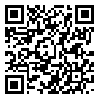BibTeX | RIS | EndNote | Medlars | ProCite | Reference Manager | RefWorks
Send citation to:
URL: http://caspianjp.ir/article-1-270-fa.html
Dear Editor
Migraine is a common neurological disorder in children and adolescents with an estimated prevalence of 11%, which can affect the quality of life and academic performance. Recent evidence suggests that although medications such as topiramate (with and without vitamin D3 supplementation), pregabalin, levetiracetam, amitriptyline, riboflavin, flunarizine and cinnarizine may be effective in reducing the frequency of migraine attacks in pediatric patients, they are not helpful to improve quality of life improvement or decrease the duration of migraine attacks [1]. We would like to propose curcumin, a bioactive polyphenolic diketone from turmeric, as an innovative therapeutic approach for pediatric migraine and highlight its valuable effects.
Although the exact pathophysiology and etiology of migraine remain unclear, oxidative stress, inflammation and neuroendocrine disparities have been recognized as major risk factors in the onset of migraine attacks. Among the miraculous effects of curcumin, we count its antioxidant, anti-inflammatory, neuroprotective and pain-relieving properties, which make it a promising candidate for addressing migraine-related mechanisms. The remarkable effect of curcumin on migraines is therefore no coincidence. In this context, recent research has shown that curcumin offers notable benefits, including a marked decrease in the severity, frequency, and duration of migraine attacks, as well as a significant improvement in quality of life [2-6].
The efficacy and safety of curcumin in children and adolescents have been confirmed [7]. In emphasizing its safety in pediatric neurological disorders, the recently published clinical study on the effect of curcumin in the treatment of intractable pediatric epilepsy should not be ignored [8].
Although this idea has not yet received attention, it is an indication that this natural drug deserves further consideration and evaluation as a novel, effective treatment for migraine in children that could potentially improve the quality of life of these patients.
| بازنشر اطلاعات | |
 |
این مقاله تحت شرایط Creative Commons Attribution-NonCommercial 4.0 International License قابل بازنشر است. |




